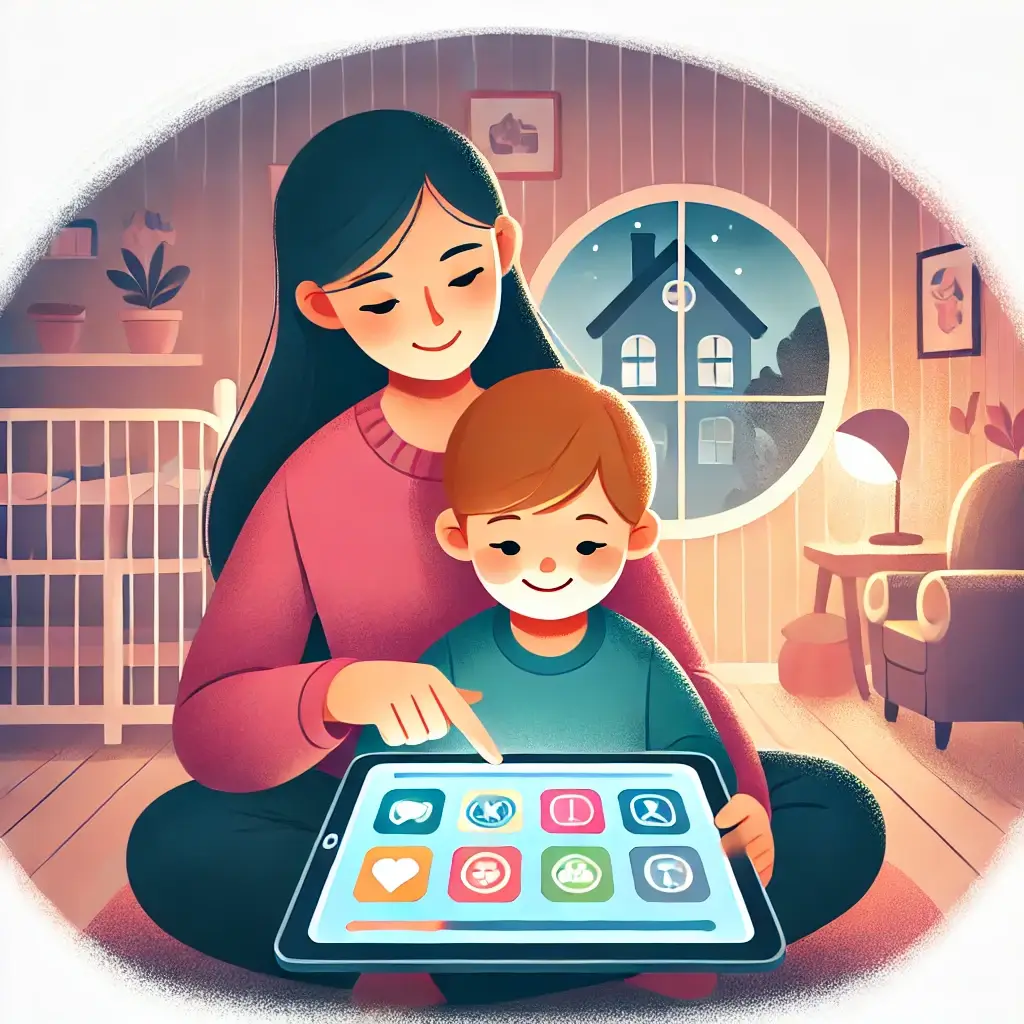Understanding Speech Therapy Support Through Technology
Parenting a child with speech and language challenges often involves navigating a complex journey of therapy sessions, home exercises, and consistent motivation. In this context, smart device applications for speech therapy have emerged as invaluable tools for parents and caregivers, transforming how speech therapy is practiced at home. Dr. James Wilson, a pediatric speech pathologist, explains, “The convenience and engagement of digital tools allow parents to actively participate in their child’s therapy, achieving faster and more consistent results.”
With the rise of user-friendly evidence-based therapy apps, parents can now support their children’s therapy goals with greater confidence and effectiveness. A study in the Journal of Speech Therapy (2024) reveals that integrating app-based tools into home routines leads to 40% better outcomes compared to traditional methods alone. These results highlight the transformative potential of technology to empower families and bridge gaps in therapy delivery.
Research and Practical Insights in Digital Speech Therapy
Recent advances in digital speech therapy technology emphasize both clinical efficacy and practical benefits. A 2024 study involving 2,000 children demonstrated a 50% improvement in skill retention among those using curated apps for home practice. Parents reported that interactive features, real-time feedback, and gamified tasks kept children engaged and motivated.
Popular speech therapy applications like Speech Blubs and Endless Alphabet illustrate how technology can support parents in facilitating meaningful practice at home. Speech Blubs uses playful, interactive exercises to help children build confidence in their speech abilities, while Endless Alphabet introduces language fundamentals through entertaining animations. These apps not only enhance practice but also foster positive parent-child interactions, making therapy a shared and enjoyable experience.
Artificial Intelligence in Speech Therapy Tools
Moreover, advancements in artificial intelligence for speech therapy are further optimizing the functionality of these tools. AI-driven speech recognition, for instance, provides detailed feedback on pronunciation errors, helping parents guide their children effectively. Apps like AI Speech Companion integrate machine learning to tailor exercises based on a child’s progress, ensuring that practice remains both challenging and achievable.
Another key feature found in leading speech therapy applications is progress tracking. By providing parents with detailed insights into their child’s performance, these tools help identify specific areas of strength and improvement. Progress reports can be shared with therapists, fostering collaboration and ensuring therapy plans remain aligned with the child’s evolving needs.
Essential Strategies for Parents Using Speech Therapy Apps
To maximize the benefits of smart device applications for speech therapy, parents can consider the following strategies:
Choose Wisely: Select apps validated by clinical research and recommended by professionals. Look for features such as evidence-based activities, age-appropriate design, and robust data privacy policies.
Set a Routine: Establish consistent practice times to reinforce skills and build habits. For example, integrating 10-15 minutes of app-based therapy into daily schedules can yield significant results over time.
Engage Together: Participate in activities to make therapy a collaborative and enjoyable experience. Active parental involvement enhances motivation and demonstrates the importance of consistent effort.
Monitor Progress: Use apps with tracking features to observe improvements and identify areas needing extra attention. Regularly reviewing these metrics can help tailor practice sessions to the child’s specific needs.
Additionally, parents should remain vigilant for signs of frustration or disengagement. If a child appears resistant to using an app, it may indicate that the difficulty level is too high or that the activities are not engaging enough. Consulting with a speech therapist can provide insights into adjusting the therapy plan or selecting alternative tools.
Navigating Common Challenges in Digital Speech Therapy
While smart device apps for speech development offer many advantages, they are not without challenges. One concern is the potential overuse of screen time. Parents should balance app-based therapy with other activities to ensure children have a holistic learning experience. Incorporating physical play, reading, and face-to-face interactions alongside digital tools creates a well-rounded approach to speech development.
Another challenge is navigating the overwhelming number of apps available. Not all tools are created equal, and some may lack the scientific backing necessary for effective therapy. Parents are encouraged to consult with speech-language professionals when selecting apps and to prioritize those with positive reviews from credible sources.
Future of Speech Therapy Technology
For parents and caregivers, smart device applications for speech therapy support represent an opportunity to actively engage in their child’s speech therapy journey. By combining professional insights with the accessibility of technology, these tools help create a supportive and effective environment for communication development. With informed choices and ongoing collaboration with therapists, families can harness the full potential of these innovations to achieve lasting progress. The integration of cutting-edge features like AI, progress tracking, and gamified learning ensures that app-based therapy remains a valuable supplement to traditional methods, offering hope and empowerment to families worldwide.
References
Journal of Speech Therapy (2024)
Digital Therapy Research (2024)
Communication Development Studies (2024)
Speech Technology Review (2024)
Pediatric Therapy Outcomes (2024)

Dominic E. is a passionate filmmaker navigating the exciting intersection of art and science. By day, he delves into the complexities of the human body as a full-time medical writer, meticulously translating intricate medical concepts into accessible and engaging narratives. By night, he explores the boundless realm of cinematic storytelling, crafting narratives that evoke emotion and challenge perspectives. Film Student and Full-time Medical Writer for ContentVendor.com



